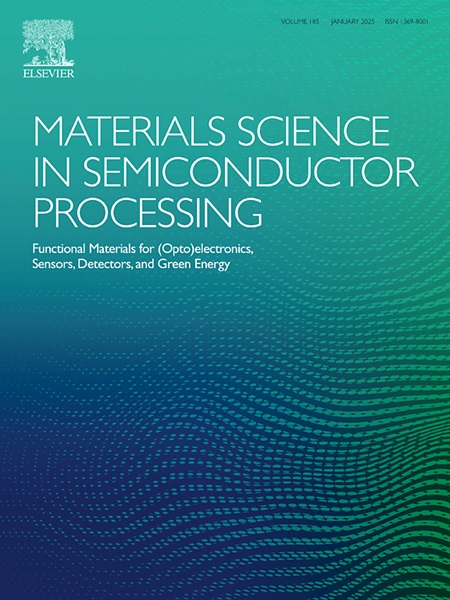CF4等离子体处理Ge提高Pt/Ti/Al2O3/p-Ge金属氧化物半导体memcapacitor器件可靠性
IF 4.6
3区 工程技术
Q2 ENGINEERING, ELECTRICAL & ELECTRONIC
引用次数: 0
摘要
人工突触装置的可靠调制是实现神经形态计算系统的关键。在此,我们首次展示了基于CF4等离子体处理的Al2O3/Ge界面工程实现的可靠的Ge基memcapacitor。电容测量显示,CF4等离子体处理的memcapacitor的线性度和周期变化有所改善,证明了可靠的突触调制。CF4等离子体处理的mem电容器突触行为的改善是由于在Ge表面进行f钝化降低了Al2O3/Ge界面缺陷态。利用高-低电容电压技术提取的低界面陷阱密度,以及通过开尔文探针力显微镜测量的相对较低的接触电位差,验证了在狭窄耗尽区域内通过精确控制缺陷状态进行可逆电荷捕获和释放。这项研究强调了CF4等离子体处理作为提高记忆电容器可靠性的成功策略的潜力,为先进的神经形态计算技术铺平了道路。本文章由计算机程序翻译,如有差异,请以英文原文为准。
Enhancing device reliability in Pt/Ti/Al2O3/p-Ge metal-oxide-semiconductor memcapacitor via CF4 plasma treatment of Ge
Reliable modulation of artificial synapse device is crucial for the implementation of neuromorphic computing systems. Herein, we first demonstrated the reliable Ge-based memcapacitor which is enabled by Al2O3/Ge interface engineering based on CF4 plasma treatment. Capacitance measurements show improved linearity and cycle-to-cycle variations in CF4 plasma-treated memcapacitor, proving reliable synaptic modulation. The improvement in the synaptic behavior of the CF4 plasma-treated memcapacitor is attributed to the reduction in Al2O3/Ge interface defect states by F-passivation on Ge surface. Low interface trap density, extracted using the high-low capacitance-voltage technique, and a relatively low contact potential difference, measured by Kelvin probe force microscopy, verify the reversible charge trapping and de-trapping via precisely controlled defect states within a narrow depletion region. This study highlights the potential of CF4 plasma treatment as a successful strategy for enhancing the reliability of memcapacitors, paving the way for advanced neuromorphic computing technologies.
求助全文
通过发布文献求助,成功后即可免费获取论文全文。
去求助
来源期刊

Materials Science in Semiconductor Processing
工程技术-材料科学:综合
CiteScore
8.00
自引率
4.90%
发文量
780
审稿时长
42 days
期刊介绍:
Materials Science in Semiconductor Processing provides a unique forum for the discussion of novel processing, applications and theoretical studies of functional materials and devices for (opto)electronics, sensors, detectors, biotechnology and green energy.
Each issue will aim to provide a snapshot of current insights, new achievements, breakthroughs and future trends in such diverse fields as microelectronics, energy conversion and storage, communications, biotechnology, (photo)catalysis, nano- and thin-film technology, hybrid and composite materials, chemical processing, vapor-phase deposition, device fabrication, and modelling, which are the backbone of advanced semiconductor processing and applications.
Coverage will include: advanced lithography for submicron devices; etching and related topics; ion implantation; damage evolution and related issues; plasma and thermal CVD; rapid thermal processing; advanced metallization and interconnect schemes; thin dielectric layers, oxidation; sol-gel processing; chemical bath and (electro)chemical deposition; compound semiconductor processing; new non-oxide materials and their applications; (macro)molecular and hybrid materials; molecular dynamics, ab-initio methods, Monte Carlo, etc.; new materials and processes for discrete and integrated circuits; magnetic materials and spintronics; heterostructures and quantum devices; engineering of the electrical and optical properties of semiconductors; crystal growth mechanisms; reliability, defect density, intrinsic impurities and defects.
 求助内容:
求助内容: 应助结果提醒方式:
应助结果提醒方式:


